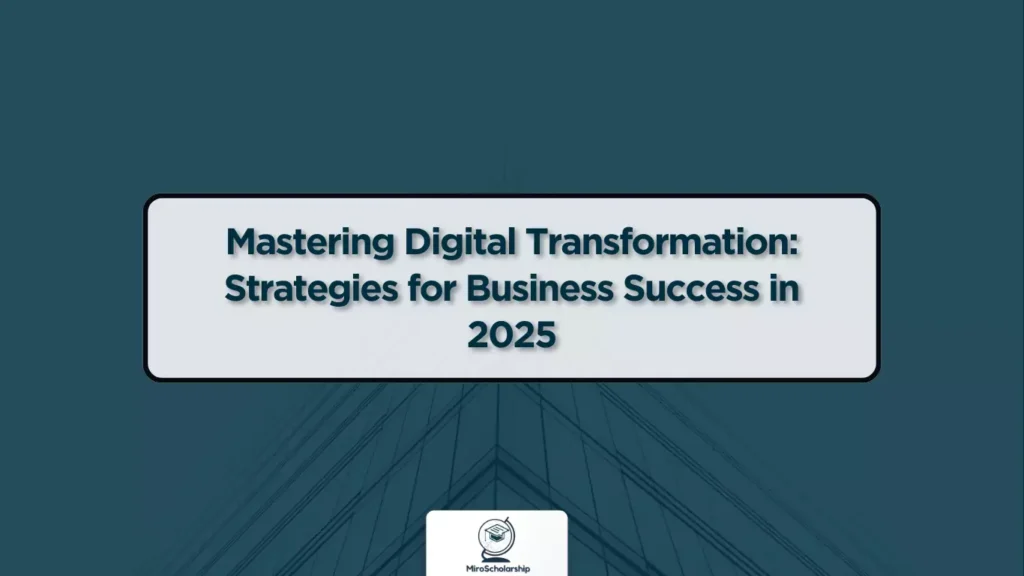Introduction
Digital transformation strategies are no longer a luxury; they’re a necessity for businesses to stay competitive in the modern landscape. From cloud computing to advanced automation, embracing digital change drives operational efficiency, enhances customer experience, and creates new revenue opportunities. This article covers the essential strategies businesses need to master digital transformation in 2024.
Core Pillars of Digital Transformation
Cloud Adoption
Moving business operations to the cloud is a fundamental step in digital transformation. It provides:
- Scalability: Cloud platforms like AWS, Google Cloud, and Microsoft Azure allow businesses to scale up or down based on demand.
- Cost Efficiency: Reduces the need for expensive hardware, lowering IT costs.
- Flexibility: Remote work is supported through cloud infrastructure, allowing employees to access resources from anywhere.
Automation and AI Integration
Automation reduces manual workload, increases productivity, and minimizes errors. Key areas include:
- Robotic Process Automation (RPA): Automating repetitive tasks such as data entry, customer onboarding, and order processing.
- AI-Driven Decision Making: AI tools like IBM Watson and Salesforce Einstein use machine learning to provide data-driven insights for strategic decisions.
- Chatbots: Automating customer service interactions, leading to faster response times and improved user experience.
Customer Experience (CX) Enhancement
At the heart of digital transformation is the customer. Implementing digital tools to improve CX is critical:
- Personalized Marketing: AI analyzes customer data to tailor content, offers, and services. Brands like Coca-Cola and Starbucks use AI-driven personalization for targeted campaigns.
- Omni-Channel Experience: Ensuring seamless transitions between online and offline channels. Customers expect a consistent experience whether they interact via social media, mobile apps, or physical stores.
Data-Driven Culture
Embracing a data-first approach is crucial. This involves:
- Centralized Data Systems: Implementing platforms that consolidate data from various sources, such as CRMs and ERPs, for a holistic business view.
- Analytics Tools: Utilizing tools like Power BI, Tableau, or Google Analytics for real-time insights and informed decision-making.
Case Study: Starbucks’ Digital Transformation Journey
Starbucks is a leader in digital transformation, integrating technology at every customer touchpoint. From mobile payments to AI-driven ordering suggestions, Starbucks leverages data to personalize user experience. Its rewards program app allows customers to order ahead, collect points, and receive customized offers based on past purchases, boosting customer loyalty.
Key Takeaways from Starbucks’ Approach:
- Mobile Integration: Enhancing customer experience through mobile payment options.
- Data Utilization: Using AI-driven data insights for personalized marketing.
- Customer Loyalty Programs: Building customer loyalty with customized offers and rewards.
Challenges in Digital Transformation
Employee Resistance
Adoption of new technology often meets resistance from employees accustomed to traditional methods. Effective change management and training programs are essential to facilitate a smooth transition.
Integration Complexities
Integrating new systems with legacy platforms can be complex and costly. Businesses must plan meticulously and allocate resources to ensure seamless integration.
Cybersecurity Risks
With increased reliance on digital tools comes the need for robust cybersecurity measures. Protecting data and maintaining privacy are paramount to building and retaining customer trust.
Conclusion
Digital transformation strategies represent a continuous journey, not a one-time project. Companies that prioritize customer experience, embrace automation, and adopt a data-driven culture will position themselves for long-term success. By leveraging these strategies, businesses can thrive in the competitive landscape of 2024 and beyond.
Read More : Mastering International Business Expansion

